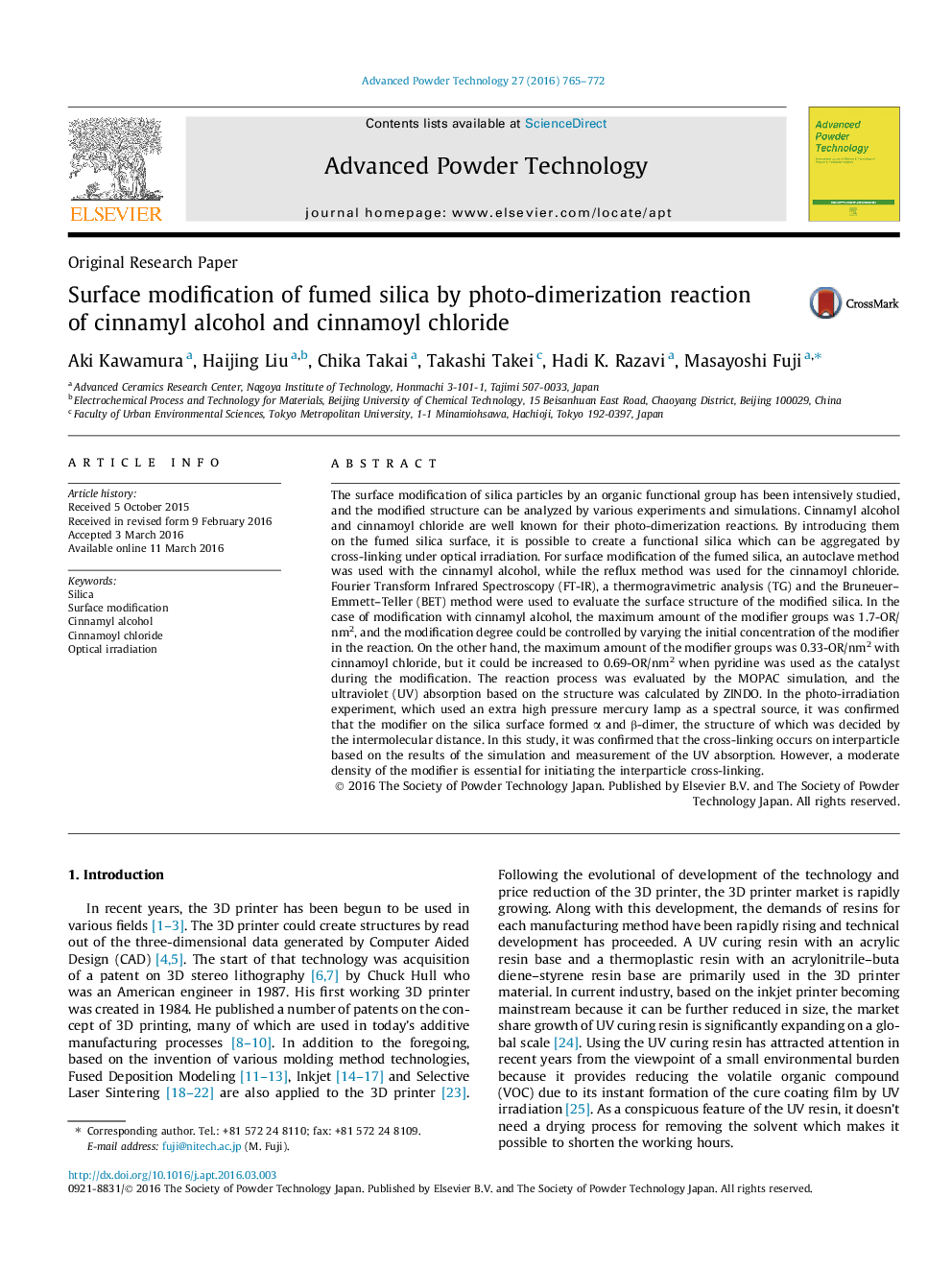| کد مقاله | کد نشریه | سال انتشار | مقاله انگلیسی | نسخه تمام متن |
|---|---|---|---|---|
| 144155 | 438922 | 2016 | 8 صفحه PDF | دانلود رایگان |
• The fumed silica surface was modified with photo functional groups.
• Dimer formations were confirmed by optical irradiation and simulation.
• The formation of α, β-dimers on modified silica surface were confirmed.
• The structure of dimer was mainly affected by the surface modification density.
• The α-dimers necessarily need to form three dimensional structure of modified silica.
The surface modification of silica particles by an organic functional group has been intensively studied, and the modified structure can be analyzed by various experiments and simulations. Cinnamyl alcohol and cinnamoyl chloride are well known for their photo-dimerization reactions. By introducing them on the fumed silica surface, it is possible to create a functional silica which can be aggregated by cross-linking under optical irradiation. For surface modification of the fumed silica, an autoclave method was used with the cinnamyl alcohol, while the reflux method was used for the cinnamoyl chloride. Fourier Transform Infrared Spectroscopy (FT-IR), a thermogravimetric analysis (TG) and the Bruneuer–Emmett–Teller (BET) method were used to evaluate the surface structure of the modified silica. In the case of modification with cinnamyl alcohol, the maximum amount of the modifier groups was 1.7-OR/nm2, and the modification degree could be controlled by varying the initial concentration of the modifier in the reaction. On the other hand, the maximum amount of the modifier groups was 0.33-OR/nm2 with cinnamoyl chloride, but it could be increased to 0.69-OR/nm2 when pyridine was used as the catalyst during the modification. The reaction process was evaluated by the MOPAC simulation, and the ultraviolet (UV) absorption based on the structure was calculated by ZINDO. In the photo-irradiation experiment, which used an extra high pressure mercury lamp as a spectral source, it was confirmed that the modifier on the silica surface formed α and β-dimer, the structure of which was decided by the intermolecular distance. In this study, it was confirmed that the cross-linking occurs on interparticle based on the results of the simulation and measurement of the UV absorption. However, a moderate density of the modifier is essential for initiating the interparticle cross-linking.
Figure optionsDownload as PowerPoint slide
Journal: Advanced Powder Technology - Volume 27, Issue 2, March 2016, Pages 765–772
